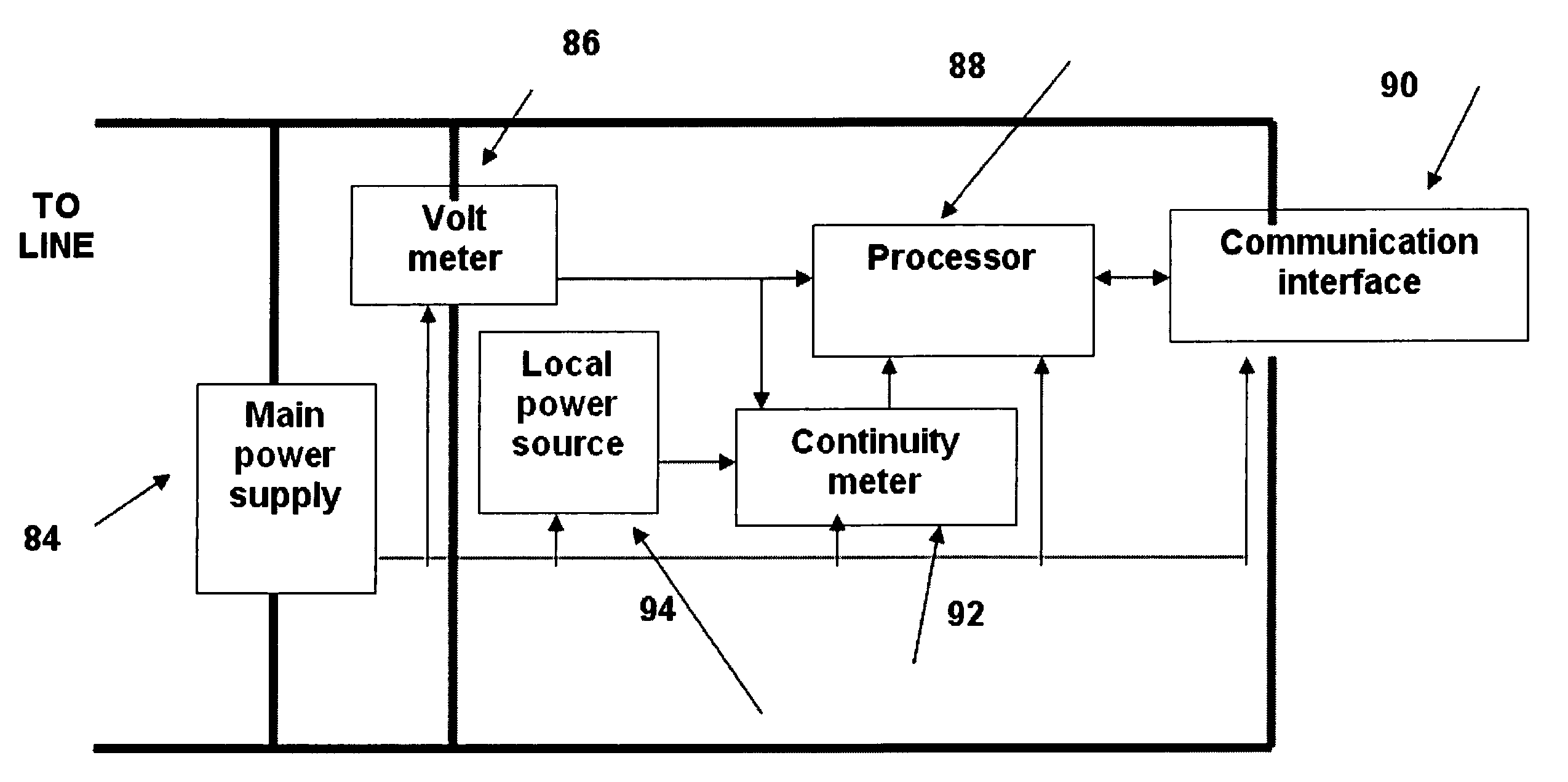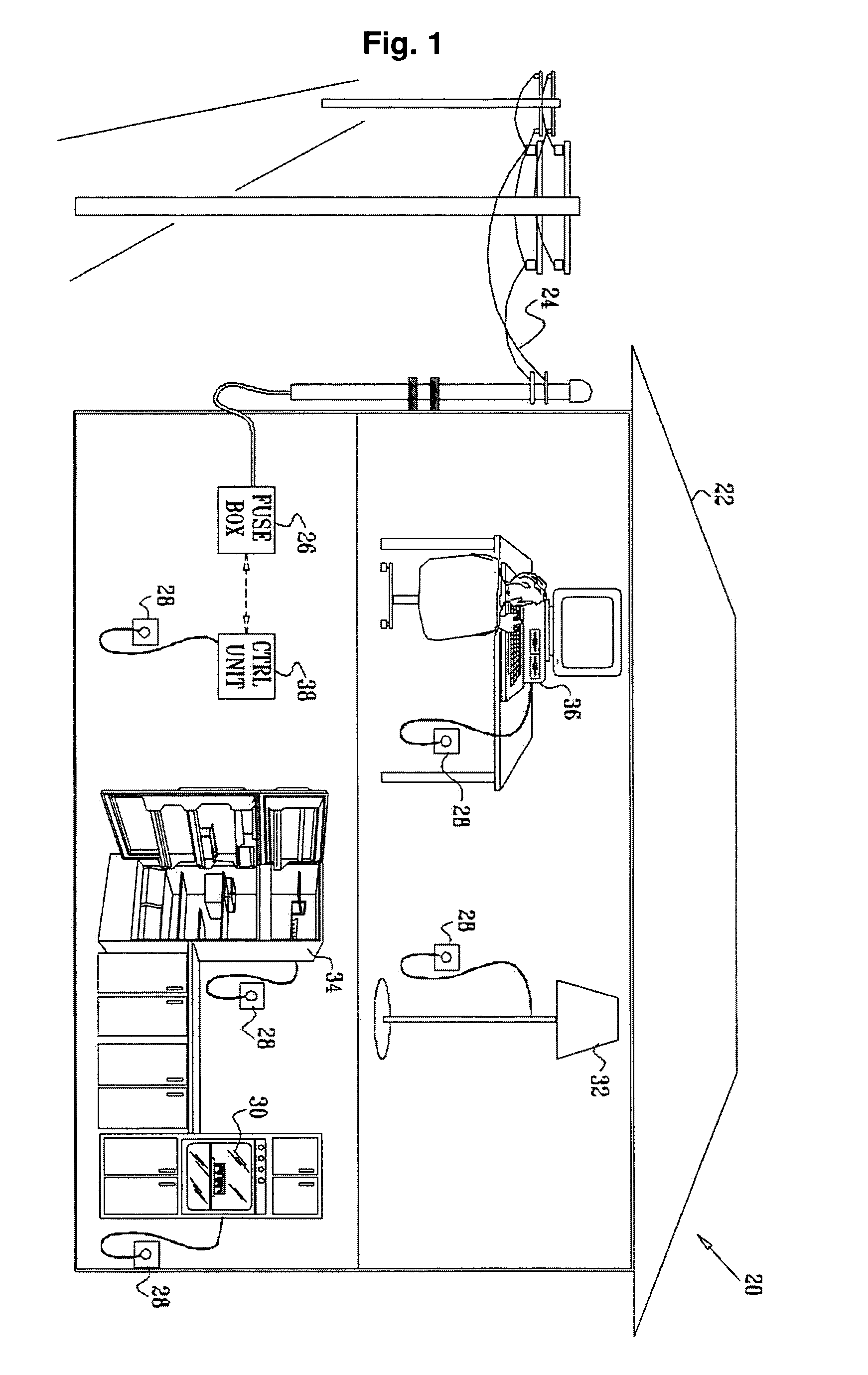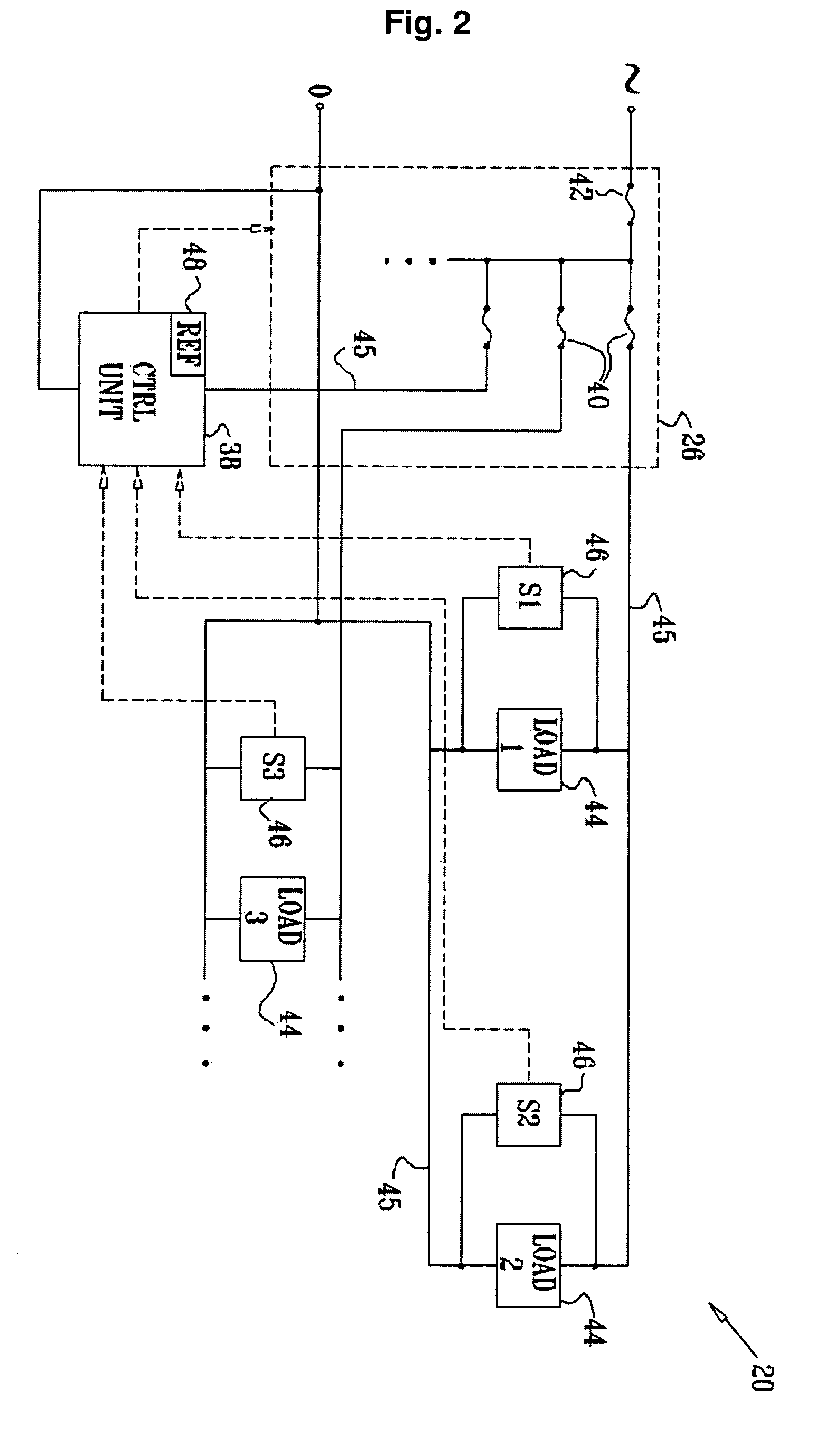System, apparatus and method for detection of electrical faults
a technology of electrical faults and systems, applied in the field of system, apparatus and method for detection of electrical faults, can solve the problems of faulty wiring, 700 deaths and $700 million in property losses, and the common failure of the power supply to the load in the facility, and achieve the effect of improving electrical fire protection and being cheaper to implemen
- Summary
- Abstract
- Description
- Claims
- Application Information
AI Technical Summary
Benefits of technology
Problems solved by technology
Method used
Image
Examples
Embodiment Construction
[0055]The proposed system according to the present invention provides early, manual and / or automatic detection of electrical faults in wiring systems and / or in the loads connected to the system. The system can be implemented as a single apparatus, for performing local tests, or may be further implemented as a system and provide detection of electric faults on a plurality of wiring systems and connected loads. An early detection spares the need to immediately disconnect the system from the main power supply. The system is provided to monitor local voltage levels across electrical loads and continuity measurements since electrical-power was continually supplied to one or more points in the electrical system of a facility, such as a home, business, vehicle, aircraft or ship. By measuring and tracking changes in the local voltage and continuity measurements regarding the presence of electrical-power, the system is able to detect changes and events that may be indicative of faults in the...
PUM
 Login to View More
Login to View More Abstract
Description
Claims
Application Information
 Login to View More
Login to View More - R&D
- Intellectual Property
- Life Sciences
- Materials
- Tech Scout
- Unparalleled Data Quality
- Higher Quality Content
- 60% Fewer Hallucinations
Browse by: Latest US Patents, China's latest patents, Technical Efficacy Thesaurus, Application Domain, Technology Topic, Popular Technical Reports.
© 2025 PatSnap. All rights reserved.Legal|Privacy policy|Modern Slavery Act Transparency Statement|Sitemap|About US| Contact US: help@patsnap.com



